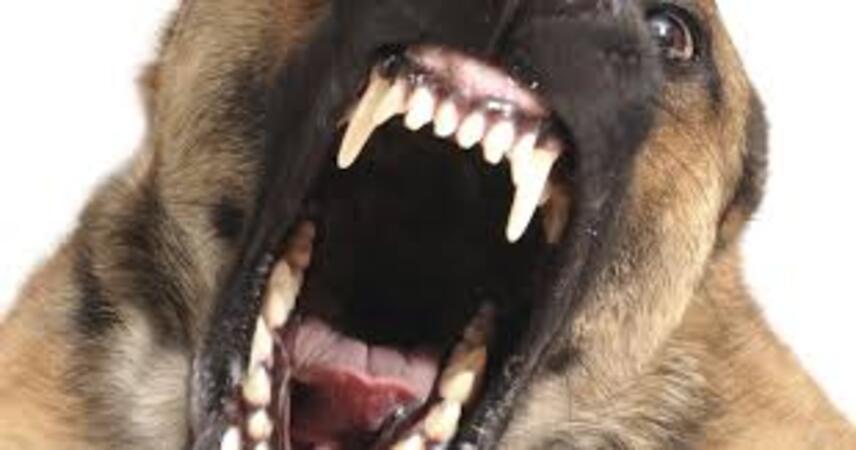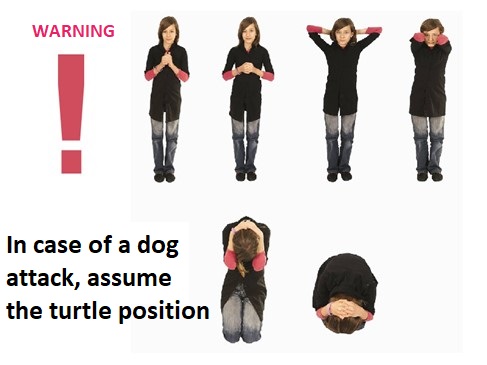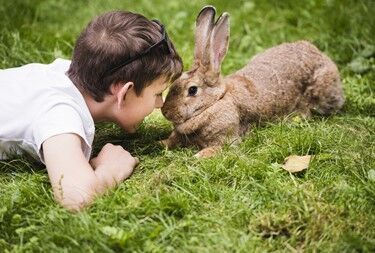The number of registered
animals is growing every day
Published: Feb 4, 2020

As behaviorists assure us, a dog is just an animal whose behavior results from human interaction, including socialization (or lack thereof), environmental influences, the conditions in which the animal lived, and traits inherited from its ancestors. Regardless of how you approach the issue, humans are usually the direct or indirect cause of unwanted reactions from the animal by consciously or unconsciously contributing to shaping the dog's personality or taking actions that provoke the animal to attack! The trigger for aggression can also be behaviors from children who do not understand a dog's psyche. These children often have no hostile intentions toward the animal but can still become victims of dog attacks.
Therefore, it is worth understanding the basic mechanisms of dogs' reactions to various stimuli to avoid situations that threaten our safety or even our lives and to teach our children the fundamentals of safe behavior.
It is essential to remember that dogs communicate with each other through body posture, eye contact, and sounds. Our reactions are not always interpreted by them as intended. Often, we unknowingly trigger responses in dogs through our posture, gestures, or gaze. The most common human behaviors that provoke aggression in dogs include:
- Petting unfamiliar dogs without the owner's permission
- Entering a dog's guarded area or approaching objects it is protecting
- Making sudden movements, waving objects near the dog
- Staring directly into the dog's eyes, which may be perceived as a challenge
- Taking food away from the dog or approaching a dog that is eating
- Smiling broadly, which can be perceived as baring teeth, signaling combative intentions
- Separating fighting dogs.
While many of our inappropriate behaviors stem from ignorance, unfortunately, there are also deliberate actions that provoke animals into aggressive reactions, intentionally seeking such responses. Examples include teasing dogs in pens, making noise, or abusive behaviors like throwing objects toward the dog.
Dogs usually avoid direct confrontation with humans, do not attack without reason, or without sending warning signals. In uncomfortable situations where they feel stressed, they display several behaviors meant to communicate that they do not intend to fight and want to avoid confrontation. For those unfamiliar with "dog language," the signals sent by the animal are not always clear or even noticeable.
Here are the most commonly observed behaviors in dogs that should be recognized and correctly interpreted:
1. Calming behaviors that indicate the animal avoids confrontation or submits, showing no interest in fighting; ignoring these signs and pursuing contact may, in some cases, lead to aggression:
- Turning the head away, looking in another direction
- Standing sideways
- Lying on the stomach or exposing the belly
- Yawning, panting
- Licking
- Urinating
2. Play invitations aimed at engaging with humans and encouraging interaction with the dog:
- Erect ears and tail
- Open mouth, tongue out
- Rear raised with the front lowered in an invitation pose
- Joyful barking, jumping
1. Out of fear; remember that the most common cause of so-called "unprovoked" attacks is anxiety in dogs. Typical signs include:
- Raised hackles on the back
- Tail tucked, ears back
- Wrinkled nose, corners of the mouth pulled back, lips dropped
2. Due to dominant and leadership tendencies, when the dog feels it has been given leadership by the human or attempts to assume it:
- Ears pointed forward
- Wrinkled nose, raised lips exposing teeth
- Raised hackles on the back
Unfortunately, regardless of how much we like dogs and how well we understand their behavior, situations arise where we cannot avoid an attack. In such moments, the best we can do is act in a way that minimizes potential injuries. Staying calm and logical in such a stressful situation is not easy, and the principles below may seem challenging to implement. However, knowing a few basic rules will help us take actions that could save our health and even our lives:
1. What not to do?
- The first and most important rule, though challenging to implement, is – DO NOT RUN!! A dog sees a fleeing person as potential prey, and even if it had not "planned" to attack, your behavior may provoke it.
Another reason not to run is the slim chance of success (unless there is a place nearby where you can hide); remember, it is highly unlikely you will outrun a faster and more resilient dog!
- DO NOT TURN YOUR BACK on the animal; turning your back loses sight of the dog, exposing you to an attack from behind and increasing the risk of being knocked to the ground;
- DO NOT STRUGGLE OR PULL AWAY if the dog bites a limb! Struggling will deepen the wounds, further excite the dog, and the chances of escaping the grip unscathed are slim.
- DO NOT PANIC; do not scream or show fear!
2. How to act?
- Stand still;
- If possible, CREATE A BARRIER between you and the dog. Use whatever is at hand: a backpack, jacket wrapped around the arm, etc. This may not prevent the attack, but it will buy time and limit the attack zone, reducing the extent of injuries. Though paradoxical, sometimes it's better to confront an attack by shielding yourself, such as presenting a covered forearm with a closed fist, rather than allowing the dog to attack the head area. This approach is unsuitable for children, who cannot engage in an open confrontation;
- If you are in a place where people might be nearby, call for help;
- If possible, DIVERT THE DOG’S ATTENTION AND DISTRACT IT momentarily with loud noises, banging objects (keys, bottles, or anything within reach), or throwing sand in its eyes;
- You can try using common commands spoken firmly, such as "stop" or "down";
- If you have one, you can use an ultrasonic deterrent aimed at the attacking dog or pepper spray. NEVER USE SPRAYS INTENDED FOR HUMANS as they contain too high a level of capsaicin, potentially causing permanent damage to the animal! Such measures should be used only as a last resort when your safety is at risk!
- If you face a direct attack and cannot take preventive actions, assume the "turtle position". To do this:
a) Clasp your hands with the palms inward
b) Tuck your thumbs inside
c) Place your hands over your neck, covering your ears
d) Kneel down
e) Tuck your head to your knees

This position may be perceived by the attacking animal as a gesture of submission, possibly reducing its interest in you or even prompting it to abandon the attack. If this does not occur, the "turtle" position protects the head and protruding, most vulnerable body parts.
If you have sustained any injuries, wounds, or scratches, it is essential to take steps to ensure safety:
a) Consult a doctor!
Animal bites require appropriate medical intervention due to harmful microbes that may be present in their mouths. Proper wound care, medication administration, and possibly tetanus or rabies vaccinations are necessary.
b) Notify the Police/City Guard of the incident. You may not be the first or last victim of the dog's owner's negligence!
Request that the owner present documentation of the dog's rabies vaccination and a current health certificate, and if necessary, submit the dog for quarantine and observation for rabies infection. REMEMBER, RABIES IS A NEARLY INCURABLE DISEASE THAT ENDS IN DEATH!!! If it is impossible to verify the dog’s health status conclusively, it is necessary to undergo protective vaccination against rabies.
Dogs may react aggressively due to improper socialization, negative past experiences, or provocative human behavior, such as sudden movements or entering a territory guarded by the dog.
Dogs may turn their head, position their body sideways, yawn, lick themselves, or lie on their belly to show they don't want conflict and wish to avoid confrontation.
Petting unfamiliar dogs without the owner's permission, entering a territory guarded by the dog, making sudden movements, staring directly into the dog's eyes, or taking away its food are examples of behaviors that can provoke aggression.



Marking animals with a microchip is the most durable, effective and completely safe method of quick and reliable identification. Every transponder (chip) has a unique number which enables instant identification of the animal and its owner, helping them reunite faster. However, it is important to remember that a chip is just a transponder with an encoded number. It is not a tracking device and contains no data about the animal or the owner! Therefore, in order to identify a chipped dog or cat, it is necessary that a microchip be registered in a national marked animal database...
Read moreIn today's world, responsibility for animal care has become not only a priority for their owners but also a societal issue. One of the most important tools in ensuring animal safety is the chip database. It allows for the quick and efficient recovery of lost pets, which is crucial for protecting their health and well-being.
The introduction of microchipping has significantly improved the effectiveness of efforts to locate lost animals, reducing stress for both owners and their four-legged friends. Registration in the chip database is increasingly required by local regulations, further highlighting the importance of this technology in ensuring comprehensive care for animals.